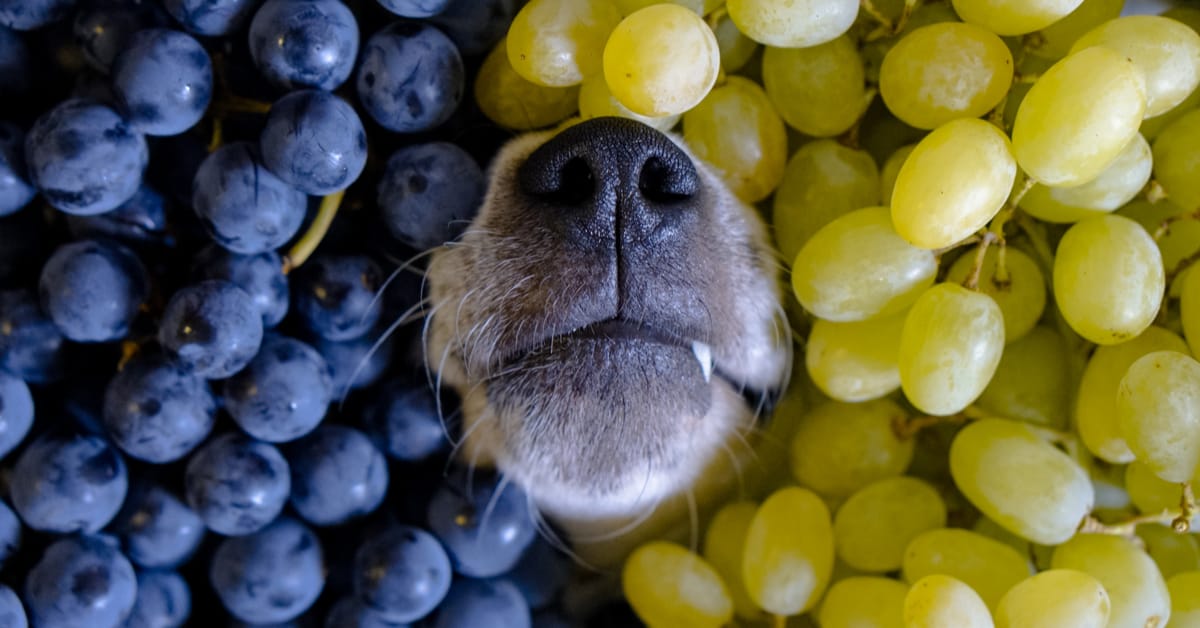If your dog ate two grapes, take them to a vet immediately for evaluation and treatment. When a dog ingests grapes, it can lead to kidney failure, which can be fatal.
Time is crucial in these situations, so seek professional help as soon as possible. Grapes are toxic to dogs, causing symptoms such as vomiting, diarrhea, abdominal pain, increased thirst, and decreased urine production. It is essential to avoid any delay in seeking veterinary care because early intervention can make a significant difference in your dog’s well-being.
Remember to keep grapes and raisins out of your dog’s reach in the future and consult a vet for any concerns or emergencies regarding your pet’s health.
Assessing The Situation
Assessing the Situation: Observe your dog for any immediate symptoms and check the quantity and type of grapes consumed. Look out for signs like vomiting, diarrhea, excessive thirst, and lethargy. Remember, even a small amount of grapes can be toxic for dogs.
Contact your veterinarian immediately for professional guidance. While waiting for assistance, try to remove any remaining grapes or residue from your dog’s vicinity. Keep an eye on your pet’s condition and provide necessary information to the vet regarding the grape consumption.
Quick action is crucial to ensure your dog’s well-being and prevent any potential complications. Stay calm and follow the advice of your veterinarian to effectively handle this situation. Remember, prevention is key, so make sure to keep grapes and other potentially toxic foods out of your dog’s reach at all times.
Contacting A Professional
If your dog has consumed two grapes, the first step is to contact a professional. Call your veterinarian or the local animal poison control center immediately. Provide them detailed information about your dog and the grapes ingested. They will guide you on the next course of action, which may include inducing vomiting or bringing your dog in for examination.
Grapes can be toxic to dogs and can cause kidney failure, so it’s important to act quickly. Avoid trying to treat your dog at home without professional guidance, as certain methods may not be effective or safe. Always consult a professional when it comes to your pet’s health and well-being.
Home Remedies And First Aid
If your dog accidentally ate two grapes, there are some home remedies and first aid steps you can take to ensure their safety. However, it is essential to consult a professional before inducing vomiting with hydrogen peroxide. Another option is to administer activated charcoal, which can limit the absorption of grape toxins.
Additionally, encouraging your dog to drink fluids like water or diluted broth can help flush out the toxins from their body. Remember to closely monitor your dog for any signs of distress or illness and seek immediate veterinary attention if necessary.
Ensuring your dog’s well-being is crucial, so it’s best to follow expert advice and take all necessary precautions.
Monitoring And Observing Your Dog
If your dog has ingested two grapes, it is important to closely monitor and observe their behavior. Look out for signs of grape toxicity such as vomiting, diarrhea, and weakness. Keep a record of any symptoms or changes in behavior that you notice.
Also, pay attention to your dog’s urine output as it can be an indicator of potential issues. By closely monitoring your dog and keeping track of these observations, you can provide important information to your veterinarian to aid in their assessment and treatment.
Remember, it’s crucial to act quickly and seek professional help if you suspect that your dog may have ingested grapes or any potentially harmful substance.
Medical Treatment And Examination
If your dog ate two grapes, it is crucial to seek immediate veterinary examination and medical treatment. The veterinarian will conduct diagnostic tests, such as blood tests and urine analysis, to monitor the kidney function. Intravenous fluids may be administered to flush out toxins and support the kidneys.
It is vital to act promptly to prevent potential kidney damage and other serious health complications. Contact your veterinarian for guidance and follow their advice to ensure the well-being of your furry friend.

Credit: outwardhound.com
Potential Complications And Long-Term Effects
If your dog has eaten two grapes, it is crucial to be aware of the potential complications and long-term effects. One of the most serious consequences can be kidney failure, which can lead to lasting damage. It is vital to schedule follow-up appointments and engage in regular monitoring to assess the dog’s condition and ensure early intervention if necessary.
Additionally, taking preventive measures is essential to avoid future grape ingestion. This can involve keeping grapes out of your dog’s reach, being vigilant during outdoor activities, and educating yourself about foods that are toxic to dogs. By taking these precautions, you can minimize the risks associated with grape ingestion and safeguard your dog’s health.
So, what should you do if your dog ate two grapes? Act quickly and seek professional veterinary advice to protect your furry friend.
Conclusion
If you find yourself in the unfortunate situation of your dog eating two grapes, it is crucial to act quickly and seek veterinary advice. Grapes and raisins have been known to be toxic to dogs and can potentially lead to kidney failure.
In such cases, even a small amount can be harmful. Remember, prevention is always better than cure. Ensure that grapes and raisins are kept out of your dog’s reach at all times, as prevention is much easier than treatment. If you suspect your dog has consumed grapes, contact your vet immediately for guidance on what steps to take next.
Providing information such as the size of your dog, the quantity consumed, and any observed symptoms can assist them in making an accurate assessment. Remember, prompt action can make a significant difference in ensuring your dog’s safety and well-being.
